です in Japanese Grammar: When to Use It (and When Not To)
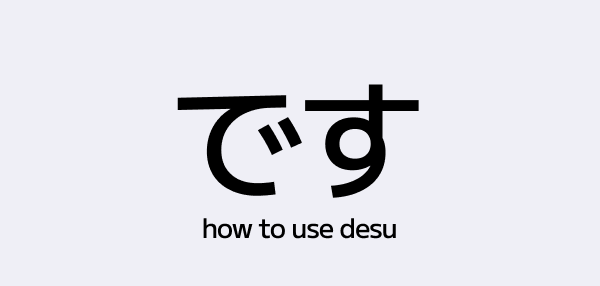
In Japanese, one of the first words learners encounter is 「です」. It's a small word, but it plays a big role in making polite and complete sentences.
You’ll see 「です」 in almost every beginner sentence, but what does it actually do? This article breaks down the meaning, function, and usage of 「です」—including common mistakes and tips for sounding natural.
1. What Is「です」?
Definition and Usage
「です」 is a word used to end sentences politely. It works kind of like "is" or "are" in English, but not exactly the same.
- It doesn’t show action.
- It doesn’t change based on who is talking.
- It makes your sentence sound more polite and complete.
Example:
- これはペンです。 Kore wa pen desu. (This is a pen.)
Here, 「です」 makes the sentence polite and tells us that "this" is a pen.
2. The Role of「です」in Polite Sentences
「です」 is used in formal or polite Japanese. That means you’ll often use it when talking to people you don’t know well, your teacher, or your boss.
Example:
- わたしはがくせいです。 Watashi wa gakusei desu. (I am a student.)
If you take out「です」, it becomes casual—and might sound a little rough, depending on the situation:
- わたしはがくせい。(casual)
3. What 「です」 Does Not Do
It’s important to know what 「です」doesn’t do:
- It does not show action.
- It does not tell you the time (like past or future).
- It does not come after verbs.
Wrong Example:
- わたしはたべますです❌
Correct:
- わたしはたべます。✅
Use 「です」 with nouns or na-adjectives, not with action verbs like たべます or 行きます.
4. Using「です」with Adjectives
With na-adjectives, you use 「です」 to end the sentence politely.
Example:
- このレストランはしずかです。 (This restaurant is quiet.)
With i-adjectives, you can add 「です」 for politeness, but it’s not required for grammar.
Example:
- このカレーはからいです。 (This curry is spicy.)
5. Past Tense of「です」
To make 「です」 past tense, change it to 「でした」.
Examples:
- これはほんです。(This is a book.) →これはほんでした。(This was a book.)
- パーティーはたのしかったです。 (The party was fun.)
The wordたのしかったalready shows past tense. Adding「です」just makes it more polite.
6. Common Mistakes with「です」
Mistake 1: Using「です」after verbs
Incorrect:わたしは行きますです。❌ Correct:わたしは行きます。✅
Mistake 2: Using「です」in casual talk
If you’re speaking casually, especially with friends or family, you can leave out「です」.
Example:
- Polite:これはおいしいです。
- Casual:これ、おいしい!
7. When Can You Omit「です」?
In casual speech, especially with people close to you, you can often skip「です」.
- あしたひま?(Are you free tomorrow?) Instead of
- あしたはひまですか?
Understanding when to use or skip「です」helps you sound more natural.
8. Cultural Insight
In Japanese culture, the way you speak shows your relationship with the listener. 「です」 is a simple but powerful way to show respect and politeness—two very important values in Japan.
9. Comparing「です」and Casual Speech in Real Situations
Use these examples to understand when「です」is needed — and when it's more natural to leave it out.
- Two friends (same age, casual conversation)
- Polite:今日はあついです。
- Casual:きょうあついね。
- → Talking to a friend the same age, casual speech is natural.「です」sounds too formal.
- Kouhai → Senpai (younger student to older student)
- Polite:この本はおもしろいです。
- Casual: ×(too casual in this context)
- → The younger student uses「です」to show respect. Even among students, polite form is often expected from kouhai to senpai.
- Senpai → Kouhai (older student to younger student)
- Polite: ×(not necessary unless being extra polite)
- Casual:この本、おもしろいよ。
- → The older student usually speaks casually. Using「です」might feel distant.
- Customer → Store clerk (shopping, asking questions)
- Polite:これはいくらですか?
- Casual: ×(impolite)
- → Always use polite form when speaking to store staff or in public service situations.
- Family members (e.g. child to parent, or among siblings)
- Polite:ごはん、おいしいです。
- Casual:ごはん、おいしい!
- → At home, casual language is totally normal. Polite form might sound too stiff or joking.
- Student → Teacher (introducing themselves or answering)
- Polite:わたしはがくせいです。
- Casual:わたしはがくせい。
- → Use「です」when talking to teachers or in class. Casual form may seem disrespectful.
- Texting or chatting with a close friend
- Polite:いまひまですか?
- Casual:いまひま?
- → In casual messages, it’s common to drop「です」. Using it might feel distant or overly formal.
Conclusion
「です」 is one of the first and most useful words to learn in Japanese. It helps you make sentences polite, and it’s easy to use once you know what it can and can’t do. Keep practicing with nouns and adjectives, and you’ll sound more natural every day!
FAQs
Q: Can I use「です」after every sentence? A: Only with nouns and adjectives. Don’t use it after action verbs.
Q: What’s the casual version of「です」? A: Usually, you just leave it out or use the plain form of the verb or adjective.
Q: Is「です」a verb? A: Not really. It’s more like a sentence-ending word that makes things polite.
Happy studying!
Related Grammar
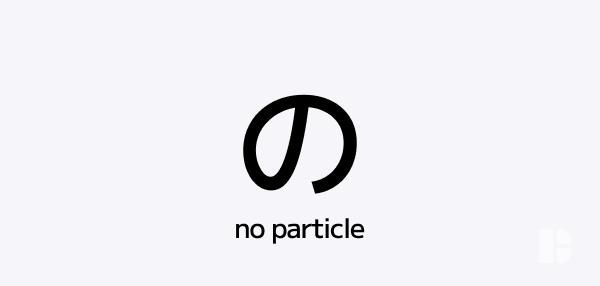 F Rank
F RankThe の (No) Particle
The particle 「の」 connects and clarifies—linking nouns, showing possession, and even turning verbs into concepts. From “my pen” to “eating is fun,” this guide covers all the key uses.
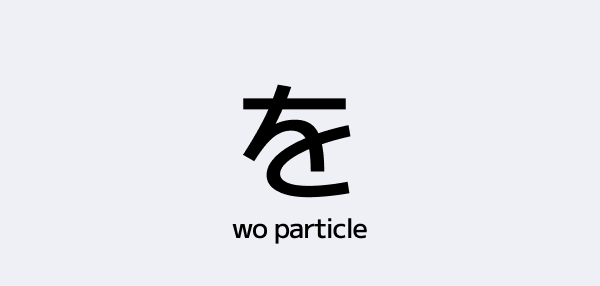 F Rank
F RankThe を (Wo) Particle
Everything you need to know about the Japanese particle を—when to use it, how it works, and what mistakes to avoid.
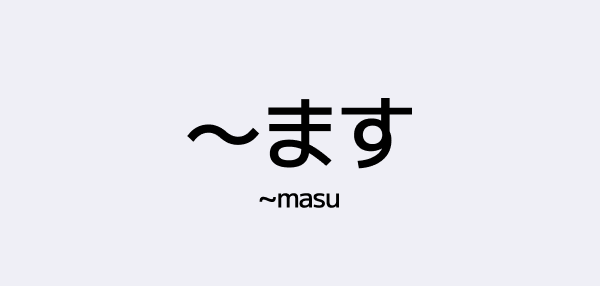 F Rank
F Rank~ます (Masu) in Japanese Grammar
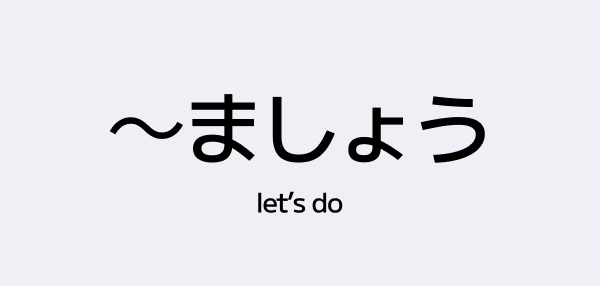 F Rank
F Rank~ましょう – How to Say “Let’s Do” in Japanese
